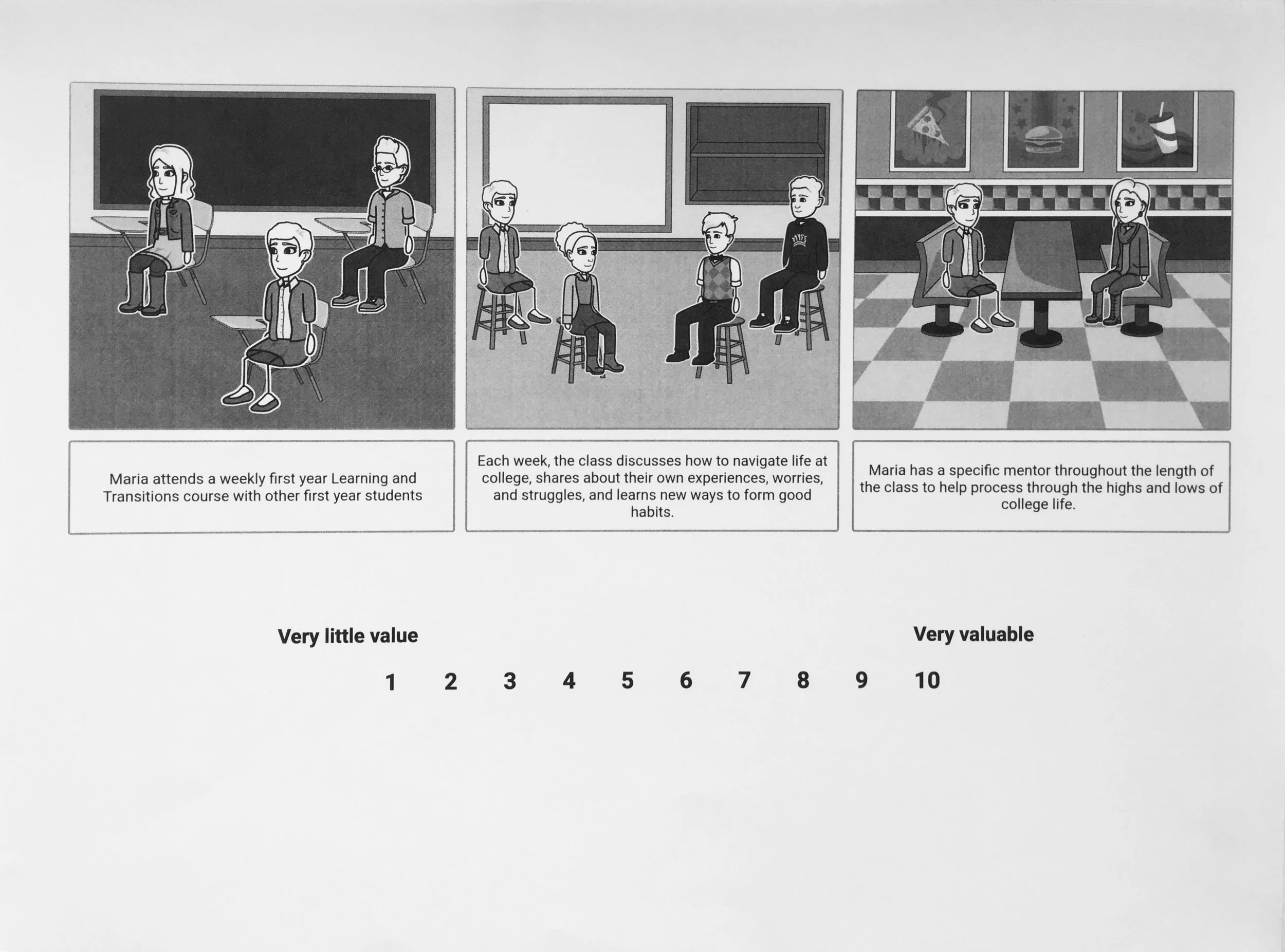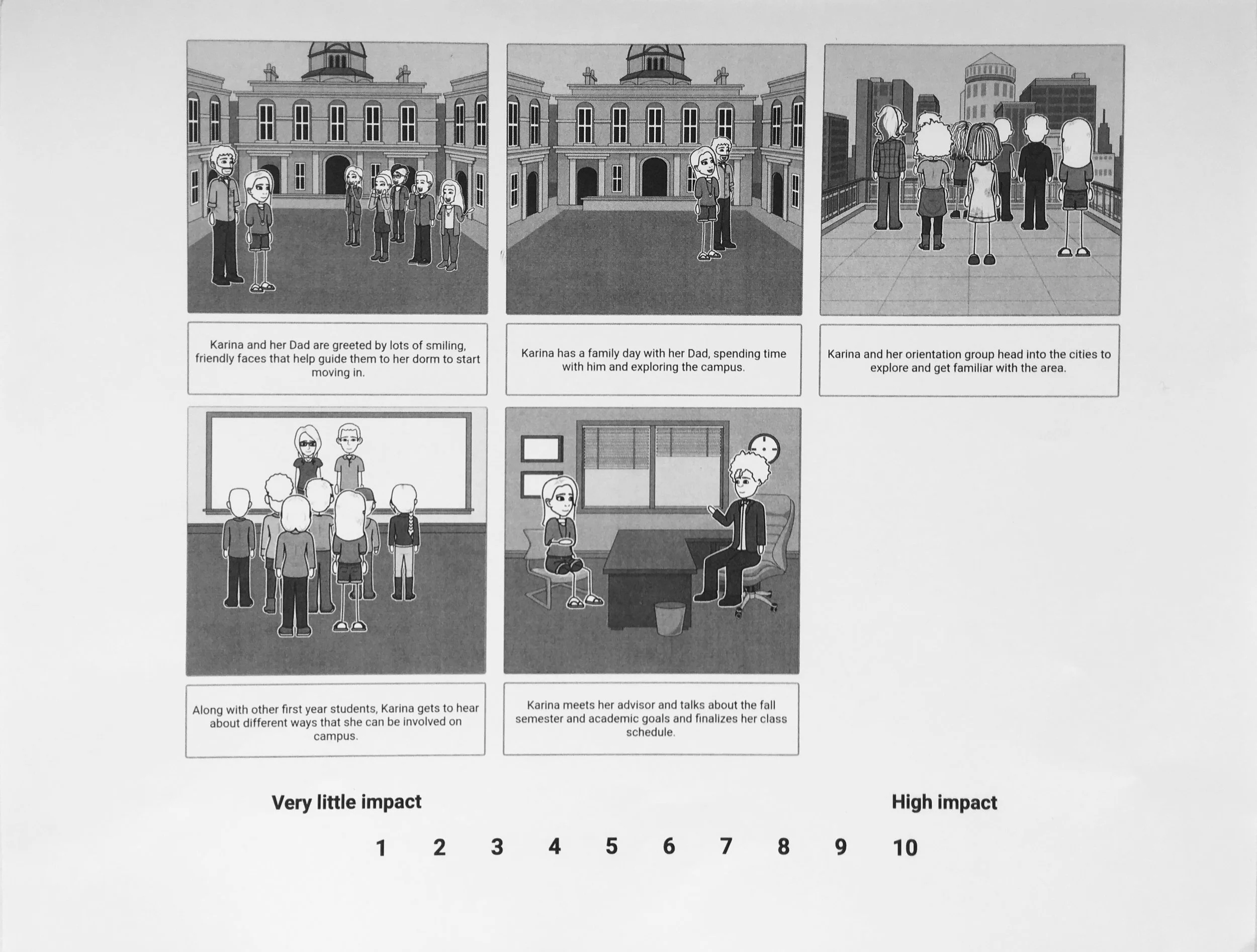
The Challenge
The pursuit of a college education can be an opportunity for expanding horizons, forming new relationships, and personal growth that shapes the trajectory of future passions and careers. It can also be a time of great challenge, especially navigating the academic, social, and emotional aspects of a new environment.
With an opportunity to engage a problem area of interest, I worked on a self-directed project centered on the first year student experience. As an alum of a small private university, I was particularly interested in the experience of students in a similar position, as there can be a unique set of expectations around community and overall campus involvement. Though I was not contracted by the school for this project, through my own personal networks I was able to speak with students and staff at my alma mater to help me work on understanding and improving the current first year student experience.
The Approach
Secondary User Research
To begin, I wanted to learn more about what the current first year student experience is like and I was able to access some initial primary research that had been done by my alma mater in this realm—secondary review allowed me to begin to identify common themes, aspects that are working well, and initial potential areas of improvement.
In order to formulate potential solutions, I completed a comparative audit of schools of similar size and mission to my alma mater and conducted interviews with some former first year students from a few of those schools. I then created touchpoint prototypes in four main areas to test with students and staff—a new student prep portal, structured welcome week, a first year learning and transitions course, and first year specific events programming.
Comparative Audit
Low-Fidelity Prototype Testing
During individual testing sessions, I showed storyboard scenarios of students interacting with the proposed touchpoints to gain feedback and insight. From the students, I was most interested to know if they could picture themselves in the scenario, how valuable the touchpoint would be to them, and how much it would have changed their current experience. From the staff, I wanted to learn how much impact the touchpoint would have on their day-to-day teams and work and what considerations would need to be made to put the touchpoint in place.
Mid-Fidelity Prototyping
Based on the feedback I heard and synthesized during the prototype review sessions, I decided to move two of the four touchpoints into further fidelity—the new student prep portal and the learning & transitions course.
After some initial ideating and sketching, I created a mid-fidelity mockup of the new student prep portal, which would allow students to get familiar with the services and structures they’ll experience in their first year and beyond.
For moving forward with the learning and transitions course, I wanted to take into account what the touchpoint would involve and how it might be implemented. According to staff, something similar to this once existed on campus and many have been voicing desire to bring it back, based on correlations they’ve seen between the support a course like this offers and students’ desire to return to the university after their first year.
I created a high level strategy document that would help staff communicate the value of a course like this to decision-makers at the university. It provides rationale for adding the course to first year student curriculum, quotes from student feedback sessions, and an outline of the various components that should be considered such as student led conversational curriculum and an individualized mentorship program.
Next Steps
Moving forward, I’d continue to work with university staff to add content to the portal and test with students to understand module topics that would be most helpful. Additionally, I’d want to explore how the portal could be expanded to support a student beyond their first year, perhaps evolving into a resource that students and staff could use together to create longer-term academic and personal development plans. Finally, I’d work with students and staff to conduct workshops to continue exploring desire for the learning and transitions course and test potential formats.


